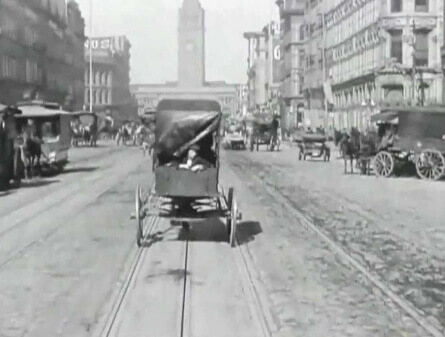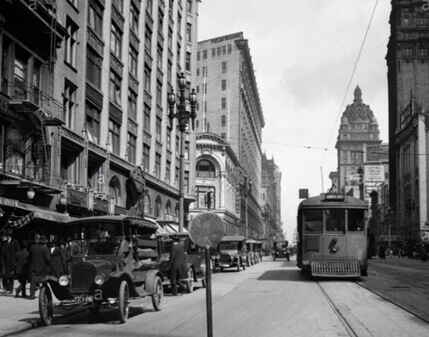The 20th century saw the rise of incredible technological advancements that propelled
mankind into a new era. The start of the 21st century so far is no different with the
rise of the Internet, data, eCommerce… and the advent of driverless cars.
In the automotive industry, these phenomena are intertwined in a landscape of drastic changes and opportunities. The recent pandemic-riddled reality has forced manufacturers to quickly adapt to new retail strategies and identify new opportunities within their network of dealers to better serve their customers in this new normal.
As for autonomous cars, despite still being a work-in-progress, they are already being road-tested. What once seemed to be the work of creative science-fiction is fast becoming a reality.
What this means is one important thing; the automotive industry is investing in digital transformative technologies, machine-learning and automation. As the industry is rapidly changing, so do retail strategies and the way companies work with their network partners.
Rapid changes require rapid responses to underlying business models and processes. In order to help their dealers adapt to these changes, companies need to harness a variety of information to leverage in their forecasts and decision-making.
A disruption in the market 100 years ago
Amid the spread of a deadly virus, both centuries kicked off in a similar manner: A major disruption in the transportation industry.
Below, the photos show Market Street, San Francisco in 1900 (left) and 1920 (right). Notice anything different?
In 1900, horses and horse-riding carriages spread for as far as the eye could see. Fast track to 20 years later? Cars had invaded the streets of San Francisco and every other major city in the US.
Not a single horse in sight.
The point here is that for thousands of years, horses were humanity’s main way of transportation. It only took 15 – 20 years for the transportation industry to be completely disrupted.
Horses and carriages had a vast industrial structure meticulously laid out beneath them; places to keep them in the cities, places to feed them, clean them, heal them, cleaning up after them…
Until they all went away.
Technologically, automobiles presented overwhelming advantages; cleaner, easier to care for, no emotional needs, no need to rest. But more specifically, they were more cost-effective with better performance and less money and time needed to be invested in.
As a result, the horse trade and care industries became obsolete. At the time, millions of workers learned to adapt to a rapidly growing industry on the brink of worldwide success.
The early disruptions of the 21st century
Since the early 2010s, most major tech companies have shifted their focus to digital transformation through a range of technology including machine learning and automation. The automotive industry is no different.
Back during the industrial revolution, industries got vastly reshaped by automation with machines that could essentially replace and outperform human manual work. The information revolution on the other hand, gave companies access to more and more relevant data that allowed them to re-think and transform their retail and product strategies.
While we talk about autonomous cars today, the trend started a while ago in the industry with the following technological breakthroughs:
-
GPS first came out in 1999 and eventually, we warmed up to the idea that we could blindly follow a machine giving us directions.
-
Object detection and collision avoidance systems are now common options when buying a new car.
-
In 2017, backup cameras became mandatory for all new cars entering the market in the US.
-
Lane-assist function now keeps drivers from running off the road.
-
Mass-market car manufacturers have since joined the latest automatic parallel-park trend such as Hyundai and its famous “Smaht Pahk” 2020 marketing campaign.
Now, countless automotive manufacturers joined the autonomous driving trend with most major companies investing heavily in autonomous driving technologies.
In 2018, Cadillac even went as far as investing millions of dollars into a light bar map of the entire US highway system solely to own their own proprietary 3D system that includes roadmaps and other important data.
Digital information now allows automotive manufacturers to:
-
Use data to better assess the health of their dealer network, forecast network financial and operational performance as well as identify emerging trends.
-
Leverage technology to streamline dealer processes, lower costs and provide efficiencies of scale.
-
Collaborate more effectively with their dealer network.
-
Work from anywhere.
Needless to say, automotive manufacturers have understood that investing in data, machine-learning and automation was the future shift of the industry to avoid getting stuck into the horse trade. With more uncertainty on the horizon, investing in adaptable business solutions that can automate internal processes and eliminate manual work will be the key to improving retail decision-making.
Access to data critical to help make network decisions
Growth-oriented manufacturers strive relentlessly when developing a strong working relationship with their network of dealers to drive performance improvement in Sales, Fixed Operations and Customer Service.
Now more than ever, it is important for them to be flexible and equipped with accurate data to react and adapt to changes that could disrupt wholesale strategies.
From online sales to vehicle pick-up for servicing, dealers have to adjust in an ever-changing environment. With the rise of eCommerce accelerated by stay-at-home government directives, many manufacturers need accurate data to develop an accurate predictive analytics model to attract technologically savvy customers.
Areas of opportunity for manufacturers to leverage technology and manage their retail and service network successfully include:
Transform Manufacturer-to-Dealer Processes
Dealers and Automotive Manufacturers should become more tightly aligned on their common processes to enhance sales and service strategy through highly informed decisions and performance improvements.
In the age of significant disruption, manufacturers and dealers must use superior collaborative processes to come much closer to one-another to jointly manage such onslaught of changes.
For example, a quick access and greater visibility to performance trends and business efficiencies will help identify opportunities for financial and operational growth across the network.
Engage New Business Opportunities
Automotive Manufacturers and Dealers need to continually scan for new business opportunities in light of the rapidly disrupting environment. Old business models may lose value dramatically, but new opportunities will open up to early responders.
This includes new ways to attract, capture and serve well-informed and growing tech-savvy consumers. It is even more important to understand the customer journey of existing clients as they require fewer marketing dollars to keep. Another example of business opportunity is the touch-less sales and service options in the age of Covid-19.
The manufacturers themselves have to contend with disruptions in the nature and profile of their own franchise network which is changing itself. This will include identifying opportunities in new ways of managing contact meetings, managing routine franchise activities and other new ways to reach out and nurture the market.
Embrace the Mantra of Flexibility
Dealers and Manufacturers must become more nimble and embrace a flexible business model as a core – i.e. “flexible” thinking.
Embracing flexibility in business strategy, business processes and software solutions’ architecture is a deep commitment that allows for a quick adaptation to disruptive market conditions which is essential for growth.
This should extend to business solutions that underpin all business processes and which can enable how a company does not just weather the changes but actually comes out as a leader in a disruptive environment.















